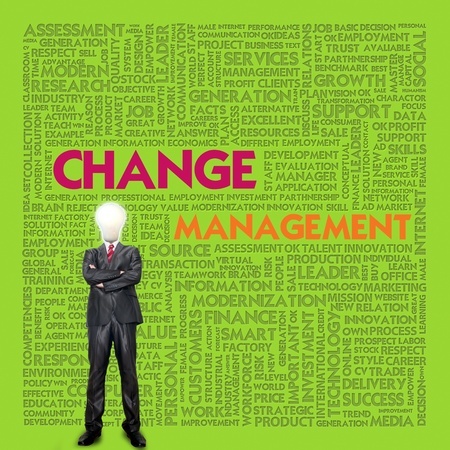The Missing Questions that Forces Transformation to Fail
What prevents real transformation?
Even when time, energy and resources are dedicated to the change the number of successful transformations remains very small.
Why?
For leaders funding transformation (in themselves, their teams or their entire organizations) there are two questions that sadly go unasked. I know this from my experience working with intelligent, resourceful leaders in organizations such as Clorox, NASA, CISCO, Nikon and more.
I’ll get to the questions in a moment. But first, do you remember Dr. Jill?
Dr. Jill Bolte Taylor—called by many who know her “Dr. Jill”—is a Harvard-trained neuroanatomist who experienced a severe hemorrhage in the left hemisphere of her brain in 1996. On the afternoon of this rare form of stroke, she could not walk, talk, read, write, or recall any of her life.
It took eight years for Dr. Jill to completely recover all of her physical function and thinking ability. She’s the author of the New York Times bestselling memoir My Stroke of Insight: A Brain Scientist’s Personal Journey and how her insights impacts the work I do with leaders is worth noting.
As the brilliant people I work with realize what shifts, in their organizations, in their teams, in themselves are required to reach the outcomes they deeply desire, they unknowingly sabotage these very same profound efforts by not taking “feelings” and their body into account.
In fact, few leaders know how to talk about this. Part of the shift to creating learning cultures in which innovation and integration merge demands leaders expand the area to which they devote their attention.
In practical terms, leaders must learn to elicit, acknowledge, work with, and incorporate the emotions of their colleagues and themselves into the decision making process.
This type of expanded awareness requires support. The good news is that some enlightened leaders are seeking that support in service of their organizations (and their own growth). Those that are not, should consider it. Why?
When leaders have come to the point where they know that the old ways will not resolve todays problems, they often turn to systems thinking and design thinking. This opens the doors to fresh ways to approach intractable problems, asks top managers to become deep thinkers and is stimulating.
Many leaders embarking upon this path feel enlivened and engaged in deep ways.
While these efforts are important, critical even, they are doomed without a recognition of what we humans truly are and how we actually change. So applying that learning takes the organization only so far.
Inevitably, the greatest ideas from the board room must be carried out by human beings, human beings with human frailties.
What inevitably arises, even in the most forward thinking, is anxiety and fear about the uncertainty of “new ways” – of looking at and doing things. When this very real resistance to change is ignored things begin to devolve.
If leaders are not aware of the powerful grip fear and anxiety assert, they cannot manifest the change. Despite the cognitive recognition that change is required, people must come aboard. There is critical need then for acknowledging what gets in the way, asking for and receiving support from this real place.
If leaders are not in touch with the anxiety in themselves, how can they work with the anxiety and fear in their colleagues? And where will they develop the capacity?
Brilliant analysis is still just that – analysis – a cognitive quality. Decisive measures that grow out of the brilliant analysis seem assured to bring about the transformation. Yet without the integration of the feelings toward these measures, anxiety and fear sabotage the best efforts.
The sabotage, often unintentional, may come in the form of procrastination, gossip, boredom, poor assessment, negativity and countless other behaviors.
The persistent myth that we are “thinking creatures” and that transformation derives from cognition (without a nod to our emotions and patterning), takes its toll in millions of dollars but worse, in despair and disappointment. The worship of the mind above all else predominates in the West.
And the price is too high.
When well intentioned, intelligent and resourceful leaders find their best efforts going awry – they burn-out or become cynical or worse.
Dr. Jill has said that we take ourselves to be thinking creatures who feel, but we are actually “feeling creatures that think.” There is enough neuroscience to affirm this. One only has to read the latest findings on motivation, plasticity, mindfulness.
Luminaries such as Dr. Dan Siegel (Mindsight) Dr. Daniel Goleman (Focus) and Wendy Palmer (Leadership Embodiment) repeatedly warn us that armed with cognition alone, we are poorly prepared for real transformation.
Regardless of which assessments leaders use to begin the transformation process, be it the DISC, Hogan, MBTI, Enneagram, etc. – unless the process they engage with integrates emotions, and the patterns that lie deep within the body, cognitive understanding, brilliant realizations and even deep desire, will not succeed.
Any profound experience of deeper development, true transformation, MUST include the emotional and bodily centers. Often inelegant, frequently unbalanced, rough and tumble move towards transformation, integration with our intellectual center is required.
Otherwise, much wonderful effort goes to waste.
An important question for transformative leaders to ask themselves and those with whom they embark upon the change journey is “How do feel I about this?” “What intelligence is your body offering?” – questions rarely heard at the conference table.
These questions – to be asked again and again amidst the cognitive excitement flowing from great ideas, not only have their place – but MUST be part of any process for real transformation to occur.







